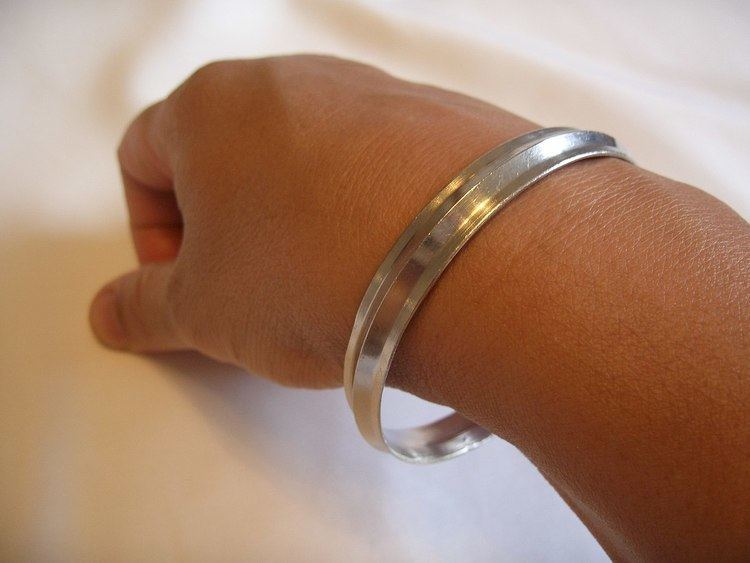 | ||
A kara (Punjabi: ਕੜਾ , کڑا कड़ा ) is a steel or iron (sarb loh) bracelet, worn by all initiated Sikhs. It is one of the five kakars or 5Ks — external articles of faith — that identify a Sikh as dedicated to their religious order. The kara was instituted by the tenth Sikh guru Gobind Singh at the Baisakhi Amrit Sanskar in 1699. Guru Gobind Singh Ji explained:
He does not recognize anyone else except me, not even the bestowal of charities, performance of merciful acts, austerities and restraint on pilgrim-stations; the perfect light of the Lord illuminates his heart, then consider him as the immaculate Khalsa.
The kara is to constantly remind the Sikh disciple to do God's work, a constant reminder of the Sikh's mission on this earth and that he or she must carry out righteous and true deeds and actions, keeping with the advice given by the Guru. The Kara is a symbol of unbreakable attachment and commitment to God. It is in the shape of a circle which has no beginning and no end, like the eternal nature of God. It is also a symbol of the Sikh brotherhood. As the Sikhs' holy text the Guru Granth Sahib says "In the tenth month, you were made into a human being, O my merchant friend, and you were given your allotted time to perform good deeds." Similarly, Bhagat Kabir reminds the Sikh to always keep one's consciousness with God: "With your hands and feet, do all your work, but let your consciousness remain with the Immaculate Lord." The kara is also worn by many ethnic Punjabis who may be Hindu, Muslim, or Christian; moreover, the use of the kara by non-Sikhs is encouraged as it represents the "totality of God."
The basic kara is a simple unadorned iron bracelet, but other forms exist. The kara originated as a protective ring to guard the sword arm of the Khalsa warriors during battle when fighting armed with swords. The person who wears kara has to keep it clean, and not to remove it until there is some need or extreme requirement.
It was also historically used like a knuckle-duster for hand-to-hand combat. Battlefield variations include kara with spikes or sharp edges. Sikh soldiers of the British Indian army would settle disputes by competing in a form of boxing known as loh-muthi (lit. iron fist) with a kara on one hand.
